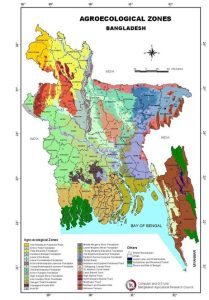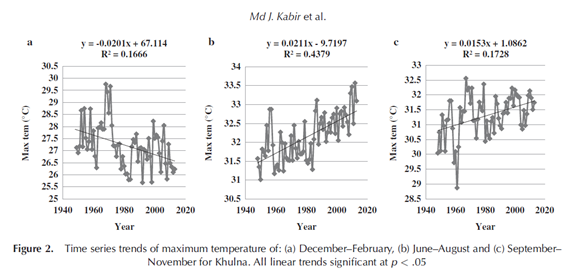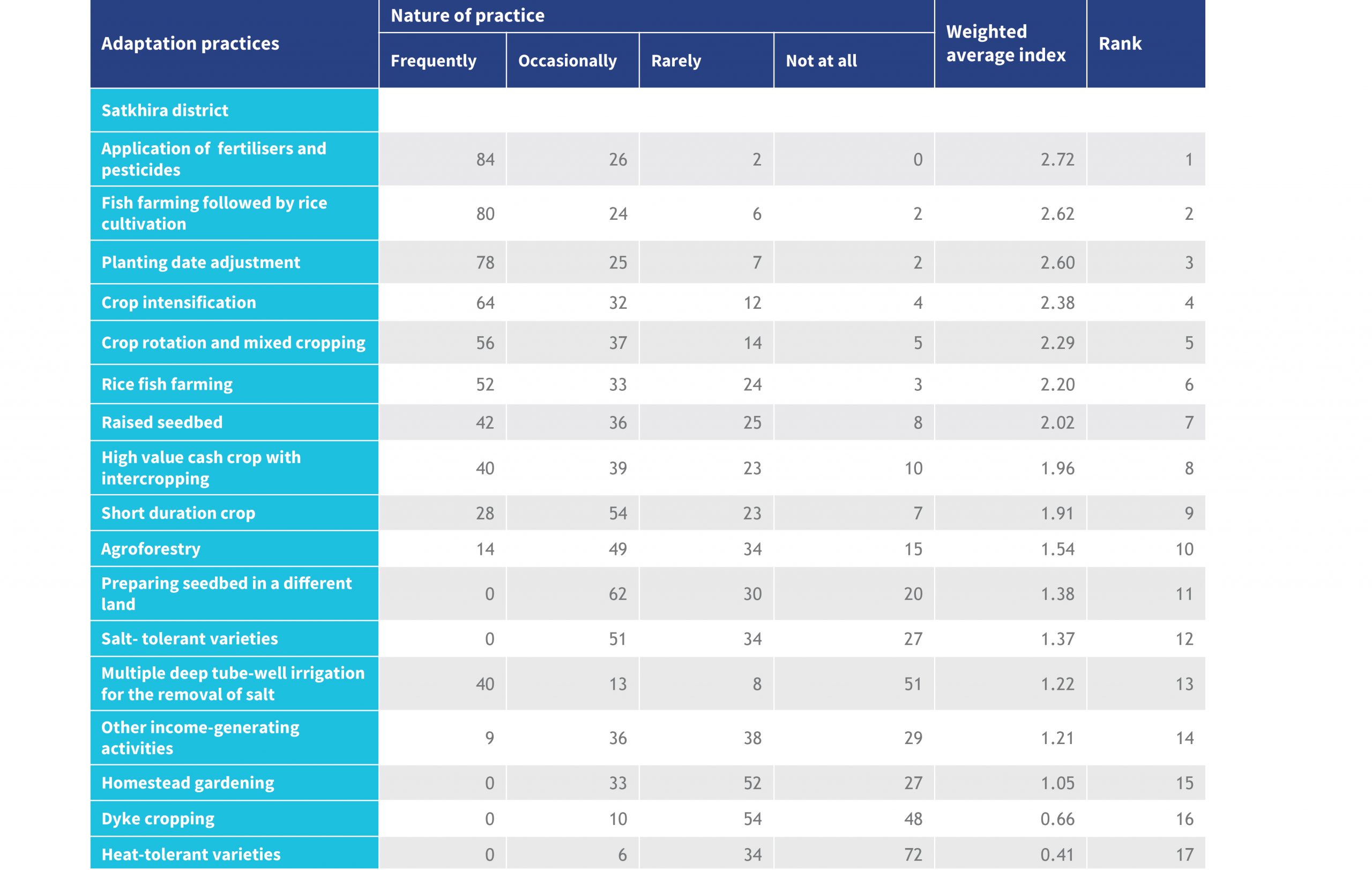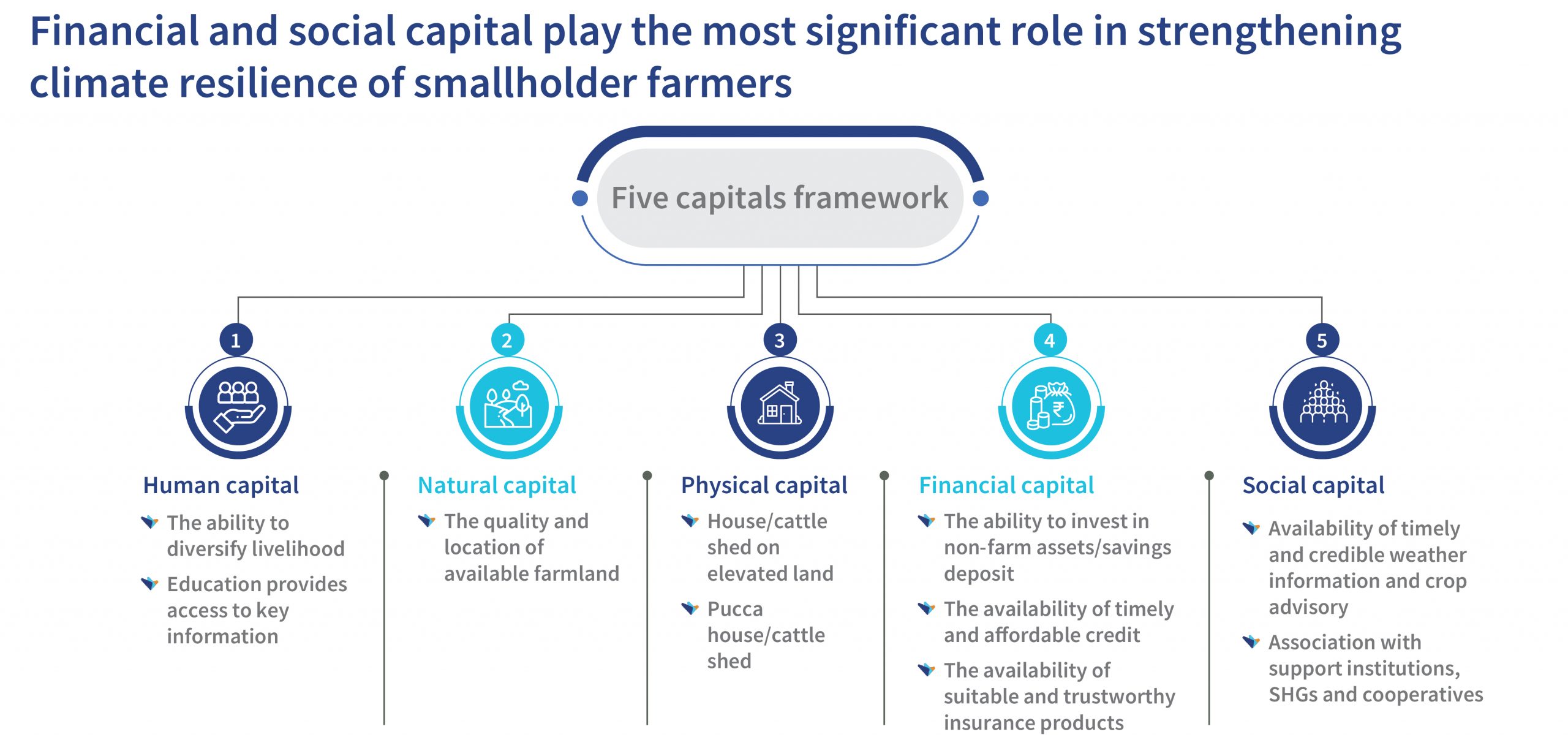Bangladesh and climate change—lessons from the frontline
by Graham Wright
Jan 27, 2023
6 min
Bangladesh remains highly vulnerable to the impacts of climate change, with flooding affecting 20-70% of the country annually. Women and poor farmers are often the worst hit, despite having a minor role in causing climate change. Even though farmers and local communities know of changing weather patterns and take steps to mitigate the effects, they lack adequate financial resources, which limits how well they can adapt to these changes.
A country at risk
Fifteen percent of Bangladesh’s 162 million people live just one meter or less above high tide (Richard, 2007), and annual floods inundate 20% to 70% of the country each year (Mirza, 2002).

To the casual observer, much of the country appears to be similar: flat, low-lying, lush, and extraordinarily beautiful. But in reality, Bangladesh is a rich tapestry of 30 agroecological zones, each with unique opportunities and challenges. Climate change exacerbates diverse problems—many of which have plagued Bangladesh for millennia. Climate change has prolonged droughts in the northwest and pluvial floods in the northeast. Fluvial floods and river erosion are more common and extreme in the country’s center. Further, the salination of soil and erosion in the southwest due to the rising sea level is also a growing problem.
And the people are aware of it Farmers are aware of the changing weather, even if many are unaware of “climate change” or what it means. They correctly identify increased extremes in temperatures at the height of the summer and depth of the winter. They note that the rains are often late, heavier, and unevenly spread over the months when they are expected. Even though they are subject to the recency effect when discussing cyclones, men’s and women’s mental maps of the changes in the weather on which they depend are remarkably consistent with those recorded by sophisticated weather stations across the country.
For example, farmers’ perceptions of the rise in summer temperature, decline in annual rainfall, more erratic rainfall, and increased frequency of rainfall were consistent with trends found in the Khulna Climate Station data. Also, their perception of increased rainfall in the post-wet-season months and the intensity of extreme weather events were consistent with the station’s data.
Source: Farmers’ perceptions of and responses to environmental change in southwest coastal Bangladesh, Kabir et al., 2017
However, these time series of maximum temperature charts hide the larger problem of significant fluctuations in the intensity of rains and sharp periods of drought within the different months—it is this variability that causes most of the damage to crops and livestock. Farmers in Khulna District note that the rainfall pattern has changed substantially over the past two decades. The number of rainy days and the total rainfall have declined, but the incidence of drought during the three main cropping seasons has increased. (Kabir et al., 2017).
Table 5: Rank order and index of farmers’ perceptions of climate change on crop production in Satkhira
For example, farmers in Satkhira District ranked the impact of climate change on crop production, as shown in Table 5 (Khan et al., 2022). Inevitably, these impacts vary across agroecological zones, but many are common—only their position on the rank varies.
Women are particularly badly affected
Bangladeshi women are particularly vulnerable to climate change. They typically have limited, low-productivity livelihood assets and options, such as small agriculture, vegetable gardening around the homestead, poultry and livestock, and small business. Climate change affects these livelihoods severely due to floods, cyclones, tidal surge, drought, and salinity. These events impact their food security, drinking water, sanitation, and health. In some extreme cases, entire families have to migrate to cities for employment. (BCAS unpublished “Vulnerability of Women and Poor to Climate Change: Gender Responsive Adaptation in Bangladesh”).
While this is true, Evertsen, Kathinka (2022) suggests that we should not simply see women as the key drivers of adaptation. To see “… success stories of women transformed from victims to agents of change who need to be brought in to increase the adaptive capacity of their communities”, places the responsibility for, and burden of, adaptation on their shoulders. This creates the “risk that women will be used as instruments … in climate change adaptation projects while overlooking the root causes of gendered vulnerabilities”.
“We are talking about the alternative livelihood, we are trying to empower the women to have some employment.…but actually, this is an additional responsibility for her. But we are never thinking about that.
Sarah White has noted how ‘women’s entry into the waged labour market does not typically mean they relinquish responsibilities for housework’ (White, 2017, p. 256). Thus, the recognition of women’s contributions ‘appears to have been achieved at the expense of appreciation of their unpaid workload within the household’ (Kabeer, 1994, p. 26), resulting in a ‘feminization of responsibility’ (Chant, 2008).”
— Evertsen, Kathinka (2022)
Active not passive
Women and farmers in Bangladesh are by no means passive in the face of the climate crisis engulfing them. On the contrary, they are responding with the creative resilience with which they have natural disasters for decades now. Table 7 from Khan et al. 2022 highlights how farmers have adapted to climate change by increasing inputs, introducing fish and shrimp farming, changing the timing of agricultural cycles, and diversifying crops to align with the changed weather conditions.
Table 7: Ranking of adaptation measures practised by the households in the study area
Further, farmers have raised their seed beds to higher levels to avoid flood waters and use deep tube well irrigation pumps to flush out the salt from their fields. Alam et al., (2017) also identified 15 adaptation strategies based on affected people’s long-term knowledge and perceptions of climate change and “planned adaptation” supported by the government and nongovernmental organizations (NGOs). Perhaps unsurprisingly, these adaptation strategies vary according to the affluence or farm size of the respondents. In particular, access to credit affects the ability of households to adapt to climate change—especially during rapid onset events, such as floods or river erosion.
But struggling for resources to adapt
Fenton, Adrian et al., (2016) notes that “Even if it does facilitate adaptation, credit limits imposed by MFIs may limit its role to incremental adaptations. Incremental adaptations facilitated by access to microfinance were not sufficient to offset the ongoing effects of flooding on agriculture, the most important household income generating activity.” Moreover, most microfinance loans were too small to allow farmers to transform their livelihoods by setting up shrimp farms or sending a family member abroad to earn and remit income home.
Most transformational adaptations required access to bank credit, which is only available to the most affluent households. Lack of access to credit restricts the ability of poorer households to adapt effectively. As a result, they use smaller loans, often from informal moneylenders, to cope. Fenton, Adrian et al., (2016) also found evidence that “microfinance can lead to maladaptation when used in non-profit generating activities as these activities do not produce income streams to help repay associated costs. Almost a fifth of all loans were obtained for repaying existing loans.” As one household interviewee said, “I can start a business; however, the interest charged would be more than the profit. If I go [abroad], that amount of money I would be able to make will be sufficient to repay.”
Multidimensional maladaptation
Evidence suggests that another type of maladaptation is a growing problem. Short-term solutions, such as chemical fertilizers and pesticides in response to declining soil health or the growth of pests, are turning out to be unsustainable. A farmer cited in Misra, 2016 said, “Our land has become sterile as we continue to use chemicals. Earlier, we could harvest a decent amount of crops without applying any fertilisers, but these days you wouldn’t be able to harvest anything without fertilisers. Twenty years back, we applied only 10 kilograms of urea on a bigha (33 decimal) of land. Nowadays, we apply 40–60 kilograms. Now, you tell me whether the land has gained productivity or has lost it?.” This problem is not unique to Bangladesh. MSC saw similar issues in its recent work on the impact of smallholder farmers in Bihar.
Conclusion
Bangladesh is on the front line of climate change, which presents a clear threat to millions of people in the country—and the world. The dynamics of the dangers they face vary across seasons, agroecological zones, socioeconomic status, gender, and their endowment of the five capitals: human, natural, physical, financial, and social (see Five capitals framework). We need to deepen our collective understanding of these factors and listen carefully to the voices of those already affected by the climate emergency.
Written by

 by
by  Jan 27, 2023
Jan 27, 2023 6 min
6 min



Leave comments